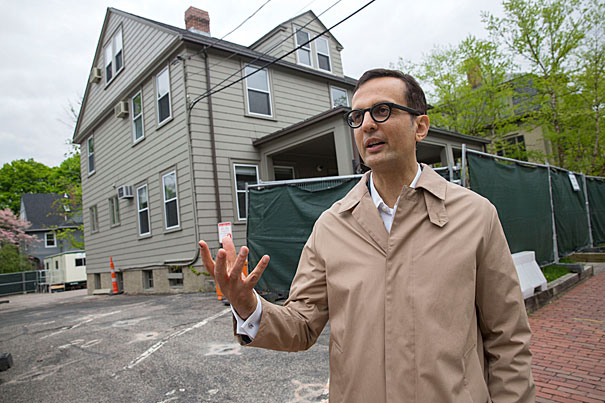JUDY WOODRUFF: To heat and cool buildings takes up an astonishing 40 percent of energy used across the world. It's a figure that grows only more troubling as climate change continues to threaten the planet. There is an architect who is trying to change not only how much energy a building consumes, but how much it produces. From PBS station WGBH in Boston, Cristina Quinn has this story. It's part of our ongoing coverage of arts and culture, Canvas.
CRISTINA QUINN: On a quiet residential street close to Harvard, this pretty nondescript house is known as HouseZero. Why is it called HouseZero?
ALI MALKAWI, Harvard Graduate School of Design: Well, because there are a lot of zeros, right? One is, the building doesn't almost use any energy from heating and cooling. And it's zero carbon. It doesn't have any electrical light during the day.
CRISTINA QUINN: No lights, no HVAC system, and barely a utility bill. The goal of HouseZero is to produce more energy than it consumes, ultimately providing power to the grid. Architect Ali Malkawi of Harvard's Center for Green Buildings and Cities, says it relies only on fresh air and natural light. And it's quiet.
ALI MALKAWI: It is, because we don't have any pumps. Nothing is moving. It's very much linked to the outside where windows open and close. It's very gentle, right?
CRISTINA QUINN: Right, there's no hum. There's no room hum.
ALI MALKAWI: Nothing.
CRISTINA QUINN: There's no machines whirring. It is very quiet, but it's comfortably quiet.
ALI MALKAWI: It's amazing, because we don't notice this unless we see that we are living in environments such as this, right, because most of our environments have these humming noises, and we get accustomed to it.
CRISTINA QUINN: Windows open automatically if it starts to get a little warm or stuffy. And they're framed by panels that provide shade. The solar chimney makes sure the inside stays ventilated. During extreme temperatures, geothermal pumps are used to cool or heat the house through the floors. But what exactly is a solar chimney?

ALI MALKAWI: It's a chimney that allows air to move freely without mechanical systems. It allows air to be drawn from the outside, and people to be ventilated, without mechanical systems in the lower parts, where you cannot do cross-ventilation.
CRISTINA QUINN: All of this though, relies on really smart technology. Under the floors and throughout HouseZero, there are five miles of cables and hundreds of sensors capturing data, like airflow, temperature and CO2 levels. Put on a pair of augmented reality goggles, and you can actually see it.
ALI MALKAWI: Now, all the information that we are getting from the house is being pulled into a giant database.
CRISTINA QUINN: No one actually lives here. HouseZero is a lab designed to help the next generation of architects design and build houses that don't rely on energy. Malkawi wants students and researchers to think of buildings as living, breathing structures that interact naturally with their environment.
ALI MALKAWI: We're basically demonstrating in this building that just natural ventilation is such an easy thing to do. But can it be controllable? And, at the same time we're saying, OK, now, this is good. Can we even go beyond that? Can we scale it up, right, with very simple technologies.
CRISTINA QUINN: While the cost of incorporating this technology into a new house wouldn't significantly add to its price, Malkawi and his team are still developing the software to make it ready for the mass housing market. As people become more concerned about their carbon footprint, many elements could become standard in architectural design. For the PBS NewsHour, I'm Cristina Quinn in Cambridge, Massachusetts.












